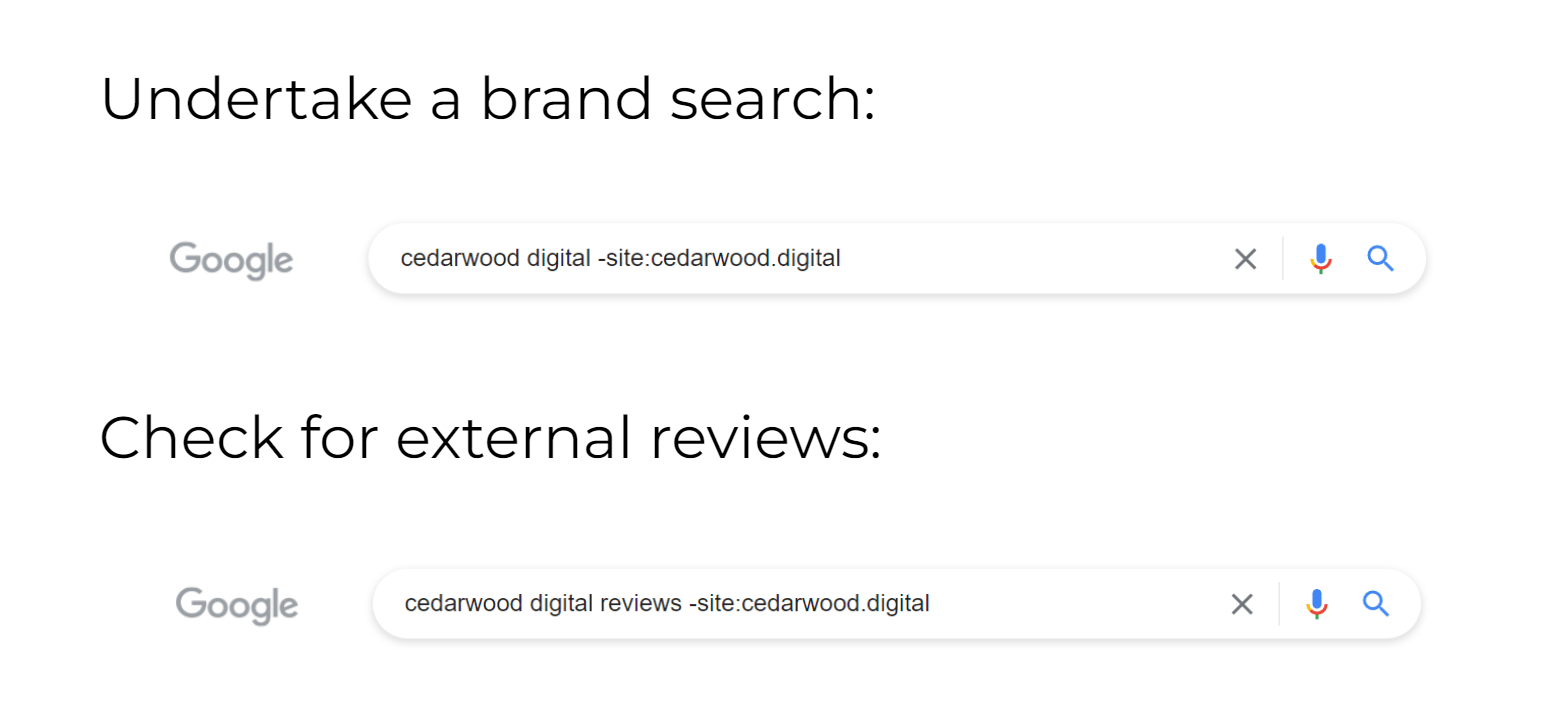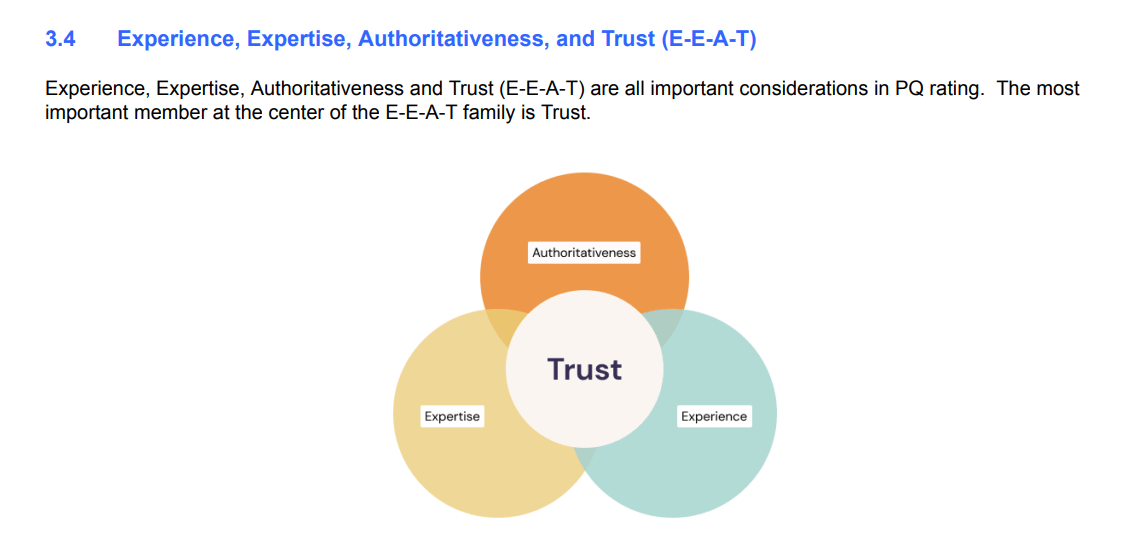So you’re pulling together an SEO strategy, either for a client or for your own website, and you’re not quite sure where to start? With SEO being an ever-evolving field there are so many different elements that go into a successful strategy and it’s important to remember that not one size fits all. When it comes to SEO you really need to tailor a strategy that matches the needs and goals of the website and the framework in which it exists. Even more than this, SEO is a team effort, and while having a good SEO agency plays a key role, the in-house team, customer services and even external reviews go a long way in ensuring that you hit those all-important quality rater guidelines.
Google has a Page Quality Rater Guidelines to give guidance around what Google’s quality raters are looking for when evaluating a website. Although Google never tells us the factors they most value when ranking a website, this is definitely a great place to start. The guidelines can help to identify ways to improve and strengthen how your website is seen, as well as the user experience it provides. When taking this into account alongside guidance from recent algorithm updates, we can create a solid strategy which keeps the concept of quality content, great user experience and purpose, and a strong website reputation at the core.
So, if you are looking to pull together an SEO strategy with all of this in mind, here are the top 5 elements that you should look to include, to ensure that your SEO strategy has the best possible chance of performing:
1. Relevancy
Relevancy is key and perhaps one of the most important elements across both your on-site and off-site SEO strategy. Relevancy comes in a number of different formats, from ensuring that your on-site content matches user intent and purpose, to ensuring that any quality links you’re building back into the website are relevant to your brand. These links will, after all, add a lot more value and have the added bonus of potentially bringing in relevant referral traffic at the same time.
Relevancy plays an important role in both on-site and off-site SEO. From an on-site perspective, it helps to ensure that your content is right for the user. This means that it answers their intent and purpose and gives them the right type of information they need to make an informed decision about your product and service. From an off-site perspective, building high quality relevant links into your website helps Google to understand that you are an expert in that particular space.
There has been a lot of discussion around how important relevancy is to links. As we push more towards semantic search, it’s not enough to just have great quality links, they have to be relevant to your brand, product or service i.e. they need to belong there. This should form the foundation of any solid SEO or Digital PR strategy.
2. Reputation
The reputation of your website and the creator of the content on your website are two of Google’s most important factors for page quality rating. This is especially true of building a reputation externally where other websites are saying good things about you, hosting your expertise or linking back to your website in an authoritative manner.
I recently spoke at Brighton SEO about how to do a quick reputation check. Two of the simplest ways to do this are quick Google searches removing your own website to understand how other websites are talking about and linking to your brand online:

By undertaking these quick searches you can get a really clear understanding of any potential concerns around your reputation. It also gives you a good idea of any external websites where you might want to look to improve your reputation, including third party review sites, social platforms, or industry leading blogs/publications within your niche.
Reputation is built on-site and off-site. From an on-site perspective, building out author profiles and justifying your content and the expertise of your authors, with a mixture of authoritative external and internal links, is very important. As too is any information around what makes them an expert.
From an off-site perspective, a strong Digital PR campaign can play a crucial role in helping to build your expertise in the wider market. A nice mixture of thought leadership, expertise-driven newsjacking and data-led campaigns can really help to push key E-A-T signals across your website. This will highlight your reputation and expertise to your audience and to Google.
A lot of brands focus heavily on their on-site reputation rather than considering off-site reputation and how Google (and other brands) might see it. By keeping an eye on how your reputation is viewed externally you can be more aware of any external review sites or news publications that might be speaking about you. In addition, you’ll gain an understanding of how your audience may see your brand when they encounter it for the first time.
3. Experience, Expertise, Authority & Trust
Over the last few months I’ve spoken at length at a number of conferences about the concept of E-E-A-T and how important it is with regards to Google’s Quality Rater Guidelines. We can see this expressed within the guidelines in section 3.4, which discusses E-E-A-T specifically:

Source: Google’s Quality Rater Guidelines
Although the concept of E-E-A-T isn’t anything new for SEO agencies, the way that it is understood and adapted into use has changed over the last few years as we have come to better understand the depth of E-E-A-T signals and how these can be implemented across a website. The aim now is to ensure we provide a great user experience and really focus on not only answering the user’s purpose and intent, but also demonstrating that our websites are trustworthy and authoritative enough to be experts on the subject matter.
E-E-A-T isn’t just about on-site content or building high quality authoritative links, it’s about drawing it all together to ensure that the website as a whole is seen to carry this level of expertise, authority and trust. Internal linking and building semantic themes, creating high quality, relevant external links, creating strong on-site content and ensuring the website is easily accessed and crawled, all play their own role in supporting E-E-A-T. It’s important to get each piece of the puzzle working correctly to give that great overall experience.
In the last few months we’ve had more Google algorithm updates than I can remember, but there has been one consistent theme throughout them. Whether it’s aiming to drive more “Helpful Content” or looking to improve “Product Reviews” we can see that each of these updates is tied together by this underlying theme of ensuring a website has strong E-E-A-T signals; the algorithms are just set up to test it in different ways.
So if you haven’t got to grips with the concept of E-E-A-T, or perhaps you’re missing a few pieces of the puzzle, now is a great time to pull all of this together. If, in particular, external linking is one area you want to improve you can read here more about the value of external link building in E-E-A-T
4. Crawl, Indexation & Internal Linking
In SEO we often get caught up talking about links of the external variety but frequently forget or overlook links of the internal variety. In the majority of new clients we take on, the one thing I find above all else that needs improvement is the internal linking across the website.
Internal linking isn’t just about connecting your content together and building semantic themes (although it does a great job of this) – it’s mainly about using it to signpost to Google which of the pages on your website are most valuable, almost like drawing a map.
Google’s John Mueller reaffirmed in a recent Google Hangout that internal linking can be one of the most important aspects of SEO as it helps to signal the importance of your pages to both Google and the user. It should be used in a strategic way to think about what is most important to you and how you can signal that through effective internal linking. It’s also a great way to really build pillars around your key pages and highlight your expertise by linking related articles, key blog posts and data pieces. These can all back-up and reassure your audience of your expertise, authority and trust in these sectors.
However, we don’t just use internal linking to help signpost Google and pull together our content in pillars and semantic themes, it also plays an important role in ensuring that Google can effectively crawl and index your website. Internal links are one of the main ways that the Googlebot moves through your website, so giving it a clean and sure path through, especially to all of your key pages, plays an important role in SEO success.
Strong internal linking also helps Google to effectively index your website. If your website isn’t within Google’s index then chances are it won’t rank for anything; it needs to be in the index in the first place to be able to rank! You may have come across errors in Google Search Console where Google has crawled but not indexed your pages yet, and often through choice. This can be incredibly frustrating for webmasters as often there is not the easiest of fixes available. Having strong internal linking can help signpost to Google how valuable new and existing pages are. Additionally, it points Google in the direction of any new pages to ensure that these are quickly and effectively indexed, giving them the best possible chance to perform.
5. Great Content
Save the best until last? Solid content is a very important part of your SEO strategy and it’s important that any content you create is aimed first and foremost at your user – answer their questions, meet their purpose, deliver their expectations. By adhering to each of these elements you are able to ensure that you are delivering great content that satisfies the user’s query.
It’s important to add that great content doesn’t equal lots of content or content that gets added to a website everyday. Rather, it looks at the query contextually; is there enough content to answer the user’s question and does it do this effectively (i.e. does it get straight to the point)? Is the content laid out in such a way that the user can easily understand what is going on and does it help to make it digestible? Are you addressing your content in a conversational manner with questions and answers?
It’s also important to evaluate whether your main pages need supporting content; so looking at how you semantically link content together on the page to ensure that the user can be fully informed. If you have blog articles or news articles that relate to your main content pages, ensure that you link them closely or pop a related articles section at the end of your page. This helps you to “pillar” your content and create effective content cluster groups, showcasing your knowledge, expertise, data and analysis around a given topic and adding value to that topic’s main page.
Google is a search engine. By nature its purpose is to answer a user’s question or query. So, implementing different styles of content, such as lists or FAQs, can really help Google to understand that you have content which addresses these queries. You can enhance your content further by the implementation of Schema mark-up, which is designed through code to highlight key features of the content, this in turn can also help you to exhibit SERP features when presenting on Google.
There’s definitely a lot more to a traditional SEO strategy than just technical, content and links. If you’re looking to put more depth into your strategy, or perhaps your website is in a YMYL industry where you need to place additional focus on your key E-E-A-T signals, find out more about our SEO service today!

